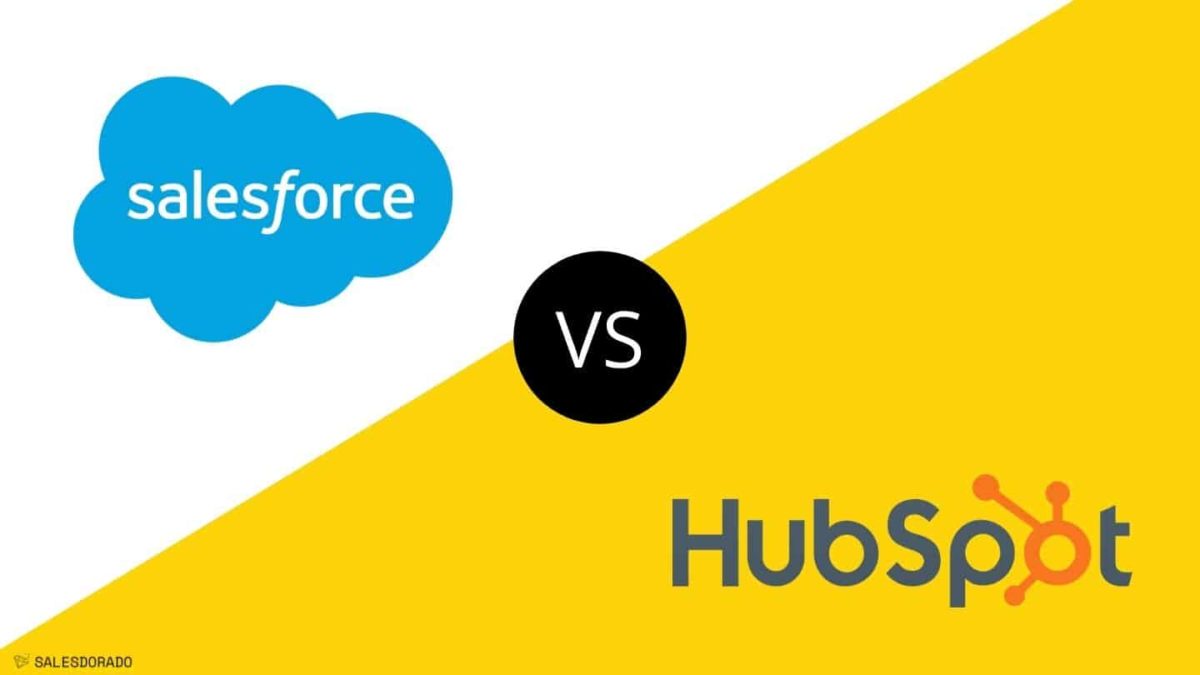What is Salesforce to HubSpot Integration?
Salesforce to HubSpot integration refers to the seamless connection between these two powerful platforms, combining the strengths of Salesforce's customer relationship management (CRM) capabilities with HubSpot's marketing automation prowess. This integration allows businesses to centralize customer data, creating a unified view of interactions and transactions. It facilitates the sharing of information between sales and marketing teams, fostering better collaboration and improving overall efficiency. By breaking down data silos, organizations can harness a comprehensive understanding of their customers, from initial contact to post-sale engagement, ultimately enhancing the customer experience.
How to Integrate Salesforce with HubSpot?
Integrating Salesforce with HubSpot involves a strategic approach. Begin by defining integration goals and mapping out data flows. Utilize tools or middleware for a smooth transfer of information, ensuring data accuracy and consistency. Establish clear communication channels between teams to guarantee a seamless workflow. Regularly test and troubleshoot the integration to address any issues promptly. Automation plays a key role, reducing manual efforts and enhancing real-time data synchronization. Follow best practices and leverage resources provided by both platforms to make the integration process efficient and reliable.
Why Opt for Salesforce to HubSpot Integration?
The decision to integrate Salesforce with HubSpot stems from the desire to create a unified ecosystem that optimizes customer data management. This integration enables businesses to align sales and marketing efforts, breaking down information silos and fostering a holistic view of customer interactions. By consolidating data from both platforms, organizations can enhance lead nurturing, improve targeted marketing campaigns, and streamline the sales process. Improved efficiency, enhanced customer experiences, and the ability to make data-driven decisions are compelling reasons to opt for salesforce to hubspot integration, driving overall business success.
Tips for Successful Salesforce to HubSpot Integration
Successful integration requires careful planning and execution. Begin by thoroughly understanding the data architecture of both Salesforce and HubSpot. Clearly define data mapping and ensure consistency between fields. Prioritize security and access controls to protect sensitive information. Regularly monitor and audit the integration to identify and address potential issues promptly. Establish a cross-functional team to oversee the integration process, promoting collaboration between sales, marketing, and IT departments. Leverage vendor support and community resources for guidance. Finally, document the integration process comprehensively, providing a valuable resource for troubleshooting and future improvements.
Types of Salesforce to HubSpot Integration
Salesforce to HubSpot integration comes in various types to cater to diverse business needs. Bi-directional integration allows data to flow seamlessly between both platforms, ensuring updates in one system reflect in the other. Point-to-point integration focuses on specific data flows, allowing businesses to prioritize key interactions. Middleware-based integration uses third-party tools to facilitate communication between Salesforce and HubSpot, streamlining the process. Custom API integration provides a tailored solution for unique business requirements, offering flexibility and scalability. Choosing the right type of integration depends on factors such as data complexity, business goals, and the need for real-time synchronization.
Common Challenges in Salesforce to HubSpot Integration
While Salesforce to HubSpot integration offers numerous benefits, businesses may encounter common challenges. Data inconsistency and quality issues can arise if not properly addressed during the integration process. Compatibility issues between the two platforms may also pose a hurdle, requiring careful consideration of data formats and structures. Misalignment between sales and marketing teams, especially in defining data mapping and priorities, can lead to inefficiencies. Security concerns, such as data breaches or unauthorized access, need vigilant monitoring and mitigation strategies. Regularly assessing and addressing these challenges ensures a more seamless and successful integration.
Measuring Success: Key Metrics After Salesforce to HubSpot Integration
Measuring success post-integration involves tracking key metrics that reflect improvements in customer data management. Customer engagement metrics, such as lead conversion rates and customer retention, provide insights into the effectiveness of integrated strategies. Operational efficiency metrics, like reduced data entry time and increased sales productivity, indicate the impact on workflow. Monitoring data accuracy and consistency over time ensures the integrity of integrated information. Additionally, assessing the alignment between sales and marketing goals and the overall improvement in customer experiences contributes to a comprehensive understanding of success post-Salesforce to HubSpot integration.
Future Trends in Salesforce to HubSpot Integration
As technology continues to evolve, future trends in Salesforce to HubSpot integration are likely to focus on enhancing automation and artificial intelligence capabilities. Integration platforms may incorporate more advanced algorithms for predictive analytics, allowing businesses to anticipate customer needs and behaviors. Improved scalability and flexibility in integration solutions will accommodate the growing complexity of data ecosystems. Collaboration between Salesforce and HubSpot may deepen, leading to more seamless native integrations and shared functionalities. Additionally, increased emphasis on data privacy and security features within integrated systems will be paramount, reflecting the evolving regulatory landscape and the importance of safeguarding customer information. Keeping abreast of these trends will position businesses to harness the full potential of Salesforce to HubSpot integration in the future.
Conclusion
Salesforce to HubSpot integration emerges as a pivotal strategy for businesses seeking enhanced customer data management. By bridging the gap between CRM and marketing automation, this integration fosters collaboration, streamlines processes, and elevates the overall customer experience. Success lies in meticulous planning, proactive issue resolution, and continuous monitoring. As technology advances, embracing future trends ensures organizations stay at the forefront of innovation. Ultimately, Salesforce to HubSpot integration is not merely a technical process but a transformative journey toward unified, data-driven business excellence.


No comments yet